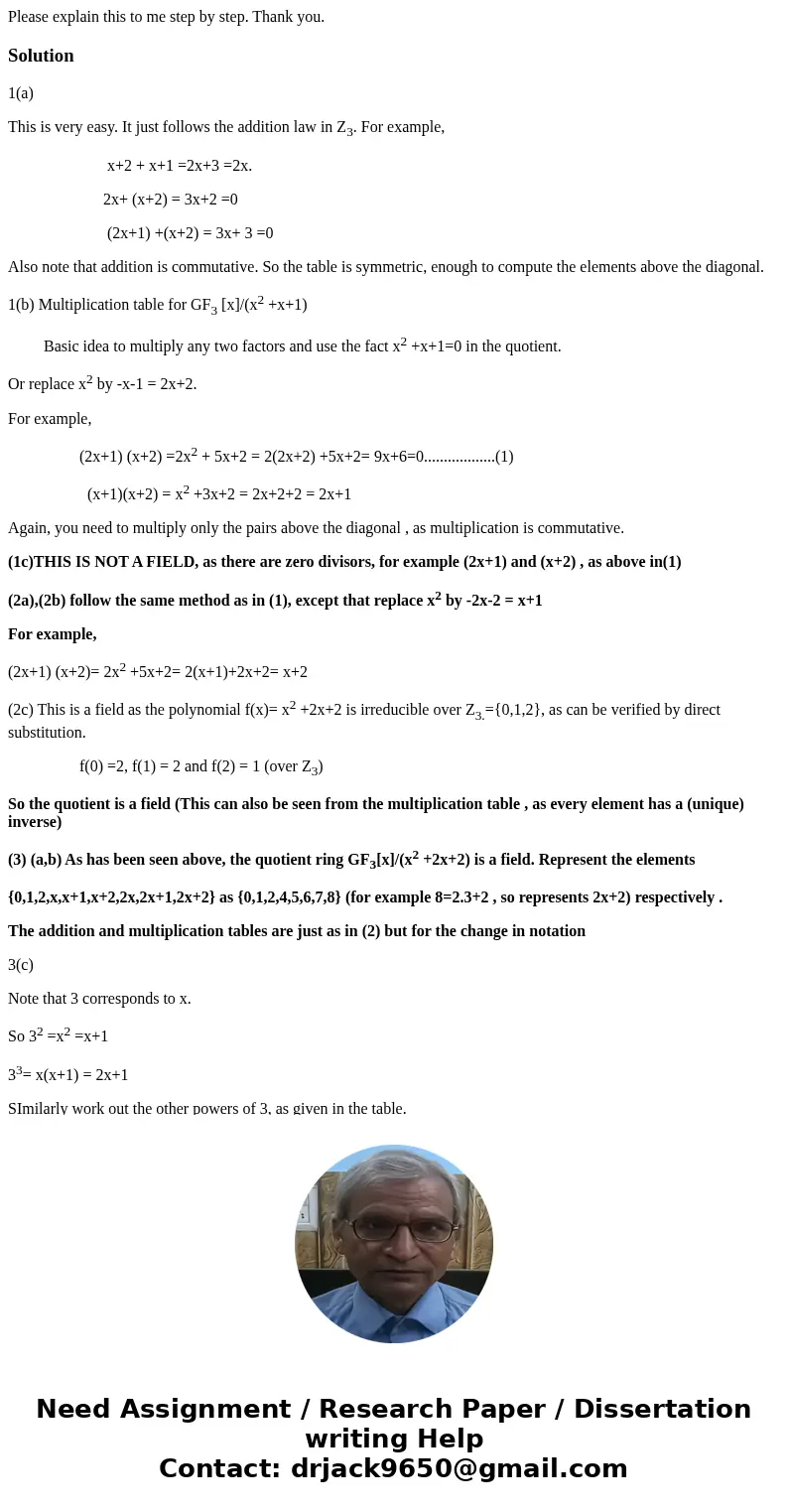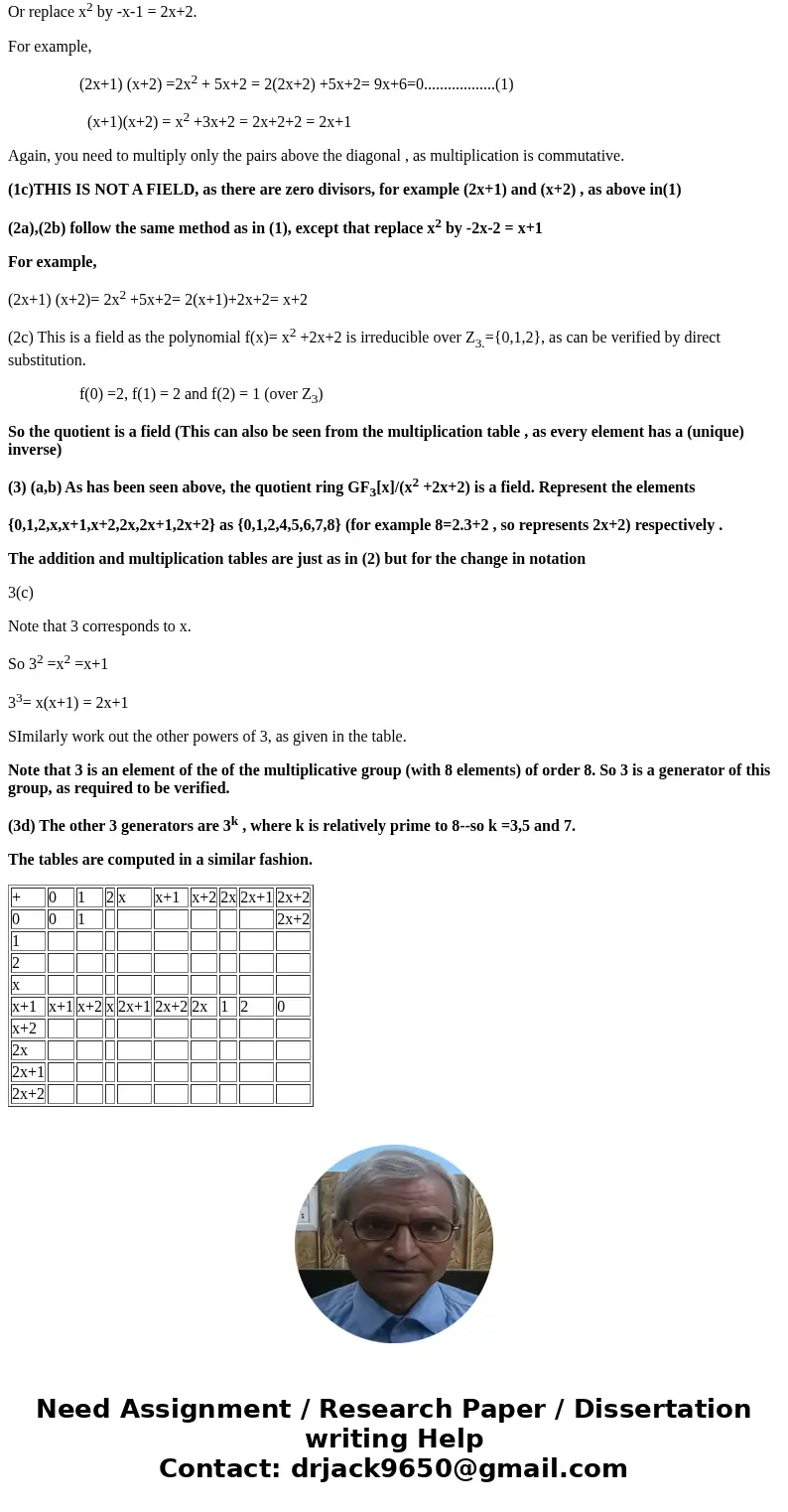Please explain this to me step by step Thank youSolution1a T
Please explain this to me step by step. Thank you.
Solution
1(a)
This is very easy. It just follows the addition law in Z3. For example,
x+2 + x+1 =2x+3 =2x.
2x+ (x+2) = 3x+2 =0
(2x+1) +(x+2) = 3x+ 3 =0
Also note that addition is commutative. So the table is symmetric, enough to compute the elements above the diagonal.
1(b) Multiplication table for GF3 [x]/(x2 +x+1)
Basic idea to multiply any two factors and use the fact x2 +x+1=0 in the quotient.
Or replace x2 by -x-1 = 2x+2.
For example,
(2x+1) (x+2) =2x2 + 5x+2 = 2(2x+2) +5x+2= 9x+6=0..................(1)
(x+1)(x+2) = x2 +3x+2 = 2x+2+2 = 2x+1
Again, you need to multiply only the pairs above the diagonal , as multiplication is commutative.
(1c)THIS IS NOT A FIELD, as there are zero divisors, for example (2x+1) and (x+2) , as above in(1)
(2a),(2b) follow the same method as in (1), except that replace x2 by -2x-2 = x+1
For example,
(2x+1) (x+2)= 2x2 +5x+2= 2(x+1)+2x+2= x+2
(2c) This is a field as the polynomial f(x)= x2 +2x+2 is irreducible over Z3.={0,1,2}, as can be verified by direct substitution.
f(0) =2, f(1) = 2 and f(2) = 1 (over Z3)
So the quotient is a field (This can also be seen from the multiplication table , as every element has a (unique) inverse)
(3) (a,b) As has been seen above, the quotient ring GF3[x]/(x2 +2x+2) is a field. Represent the elements
{0,1,2,x,x+1,x+2,2x,2x+1,2x+2} as {0,1,2,4,5,6,7,8} (for example 8=2.3+2 , so represents 2x+2) respectively .
The addition and multiplication tables are just as in (2) but for the change in notation
3(c)
Note that 3 corresponds to x.
So 32 =x2 =x+1
33= x(x+1) = 2x+1
SImilarly work out the other powers of 3, as given in the table.
Note that 3 is an element of the of the multiplicative group (with 8 elements) of order 8. So 3 is a generator of this group, as required to be verified.
(3d) The other 3 generators are 3k , where k is relatively prime to 8--so k =3,5 and 7.
The tables are computed in a similar fashion.
| + | 0 | 1 | 2 | x | x+1 | x+2 | 2x | 2x+1 | 2x+2 |
| 0 | 0 | 1 | 2x+2 | ||||||
| 1 | |||||||||
| 2 | |||||||||
| x | |||||||||
| x+1 | x+1 | x+2 | x | 2x+1 | 2x+2 | 2x | 1 | 2 | 0 |
| x+2 | |||||||||
| 2x | |||||||||
| 2x+1 | |||||||||
| 2x+2 |


 Homework Sourse
Homework Sourse